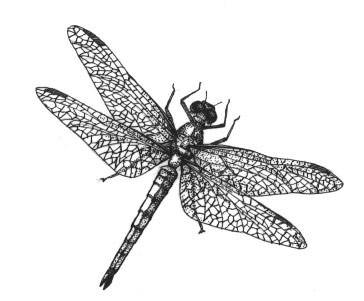
A “swarm migration” of dragonflies is impossible to ignore – if you’re lucky enough to see one. In a swarm migration, thousands or millions of these swift and colorful insects fly in one direction, usually toward the southeast, in the autumn. They may form a thin sheet of flying bodies, a thick ribbon 50 yards across, or even a cloud. They are as thick as locusts.
People who generally ignore dragonflies are so amazed by the phenomenon that they search the internet and report their experiences to Michael May, an entomology professor at Rutgers University in New Jersey and founder of the North American Dragonfly Migration Project. It’s a good thing too; while he is one of the leading scientific researchers of dragonfly migration, May has only seen one swarm migration himself.
That’s because even though scientists know a lot more about dragonfly migration today than they knew 20 years ago, they still can’t predict swarm migrations – which happen on the East Coast about once or twice a year – reliably enough to be in the right place at the right time to see it for themselves.
But there is little doubt that dragonflies migrate. There are reports dating back to the nineteenth century, and recent research also verifies that dragonflies return northward in the spring, though not as commonly in large swarms.
“Dragonfly migrations are not like bird migrations,” says Mark A. McPeek of Dartmouth College’s Department of Biological Sciences. “For bird migrations, all individuals of a species move south in the fall then move north in the spring. In contrast, most individuals of a ‘migrating’ dragonfly species do not migrate, since most are aquatic larvae at the time migration occurs.” Within the same species, therefore, some individuals migrate and some don’t.
For those that do migrate, the flight south is a one-way trip. In this way dragonfly migration resembles monarch butterfly migration. The monarch that returns to our region in the spring is a descendant many generations removed from the monarch that left in the fall. Similarly, the dragonflies that fly north in the spring are the progeny of those that departed in the fall.
While dragonfly migration resembles monarch butterfly migration biologically, in sheer mechanics it has more in common with hawk migration. In fact, most of the data on dragonfly migration comes from hawk watchers who have noticed that a good day for watching hawks is usually also a good day for seeing dragonflies.
Both hawks and dragonflies are driven by cold fronts in the fall. Both take advantage of air currents and ridgelines. And both tend to cluster in large groups before their migration route passes over a large body of water. This is why Cape May, NJ; Long Island, NY; and Cape Cod are hot spots for both large kettles of hawks and large masses of dragonflies.
The chances of seeing a swarm migration in our area are slim because we are missing that large body of water. Certainly large migration flights that are not swarm migrations are possible, although none have been reported. Keep in mind that not every swarm of dragonflies is a migrating swarm. Dragonflies sometimes gather in swarms while feeding, and few species “hilltop,” or gather on the tops of hills to mate.
Dragonfly migration season runs from July to mid-October, with its peak in September. Several of the key migrant species are present in our region, including the wandering glider, the spot-winged glider, and the common green darner, which is the most widely distributed dragonfly in the United States and the most frequently reported migrant.
A good observation day is one with a south-moving cold front that covers most of the weather map. Even better is when two big cold fronts come through within a few days of each other, with a north-moving warm front in between them. This weather pattern seems to concentrate the dragonflies, although there are no sure bets when it comes to dragonfly migration.
Keeping your eyes open for dragonflies is never a waste of time, though. At this time of year the small (inch-and-a-half long) meadowhawks are out in force, patrolling our meadows. These gorgeous red dragonflies are not known to migrate long distances, but they participate in a reliable short-distance migration: from the bodies of water where they hatch from larvae to the meadows where they cruise as adults. The final destination of the long-distance migrants is not yet known, though many biologists believe that Florida and the southern U.S. states are the likely destinations.
To find out more about dragonfly migration and to see color photographs, type “North American Dragonfly Migration Project” into your web browser. More observers are needed to help biologists better understand this elusive phenomenon.


Discussion *